Learning how to drift can seem daunting, but with the right approach, anyone can master this exhilarating skill. At LEARNS.EDU.VN, we break down the fundamentals and provide expert guidance to help you start your drifting journey effectively. Whether you’re interested in car control techniques or advanced driving skills, discover a clear path to becoming a proficient drifter. Let’s explore car drifting techniques, oversteering control, and motorsports education.
1. What Is Drifting and Why Should You Learn It?
Drifting is a driving technique where the driver intentionally oversteers, causing a loss of traction in the rear wheels while maintaining control of the vehicle. It’s a thrilling skill that combines car control, precision, and a deep understanding of vehicle dynamics.
1.1 The Allure of Drifting
Why do people want to learn how to drift? Here are a few compelling reasons:
- Enhanced Car Control: Drifting improves your overall car control skills, making you a safer and more confident driver in various conditions.
- Thrill and Excitement: The adrenaline rush of sliding a car sideways is undeniably exciting.
- Motorsport Opportunities: Drifting is a popular motorsport with competitive events around the world.
- Personal Satisfaction: Mastering the art of drifting provides a great sense of accomplishment.
1.2 Different Types of Drifting
Drifting isn’t just one technique; it encompasses various styles and approaches. Here are a few common types:
- Power Over: Using raw engine power to break traction in the rear wheels.
- Clutch Kick: Using the clutch to shock the drivetrain and induce oversteer.
- Handbrake Drifting: Using the handbrake to initiate a slide, often in tighter corners.
- Feint Drift: A Scandinavian flick, involving a quick weight transfer to set up the drift.
- Braking Drift: Using weight transfer with braking to induce oversteer.
2. Essential Skills and Techniques to Learn Drifting
Learning to drift requires mastering several fundamental skills and techniques. Here’s a step-by-step breakdown to guide you:
2.1 Foundational Car Control
Before attempting to drift, you need a solid foundation in basic car control. This includes:
- Steering Techniques: Proper hand placement and smooth steering inputs.
- Throttle Control: Precise throttle application to manage power delivery.
- Braking Techniques: Understanding weight transfer and using brakes effectively.
- Clutch Control: Smooth and coordinated clutch engagement and disengagement.
2.2 Understanding Oversteer
Oversteer is the key element in drifting. It occurs when the rear wheels lose traction before the front wheels, causing the car to rotate.
How to Recognize Oversteer:
- The rear of the car feels loose and wants to swing around.
- You need to steer in the opposite direction of the turn to maintain control (counter-steering).
2.3 Counter-Steering
Counter-steering is the technique of steering in the opposite direction of the turn to correct oversteer.
Steps for Counter-Steering:
- Identify Oversteer: Feel the rear of the car start to slide.
- Steer Opposite: Immediately steer in the direction opposite to the turn.
- Modulate Throttle: Adjust the throttle to control the slide.
- Maintain Balance: Continuously adjust steering and throttle to maintain a controlled drift.
2.4 Weight Transfer
Understanding weight transfer is crucial for initiating and controlling drifts.
How Weight Transfer Works:
- Braking: Shifts weight to the front wheels, reducing grip at the rear.
- Acceleration: Shifts weight to the rear wheels, increasing grip at the rear.
- Turning: Shifts weight to the outside wheels.
By manipulating weight transfer, you can induce oversteer and initiate a drift.
2.5 Initiating a Drift
There are several methods to initiate a drift, each with its own advantages and disadvantages.
Common Initiation Techniques:
- Clutch Kick: Quickly depress and release the clutch while applying throttle.
- How to: While in second gear, quickly push the clutch in and rev the engine, then release the clutch abruptly.
- Benefit: Immediate and aggressive initiation.
- Handbrake: Use the handbrake to lock the rear wheels and initiate a slide.
- How to: Enter the corner, pull the handbrake momentarily, and counter-steer.
- Benefit: Useful for tight corners and low-speed drifts.
- Power Over: Use engine power to break traction.
- How to: Apply heavy throttle in a low gear to overwhelm the rear tires.
- Benefit: Simple but requires a powerful car.
- Feint (Scandinavian Flick): A quick flick of the steering wheel in the opposite direction of the turn, followed by a sharp turn into the corner.
- How to: Briefly steer away from the intended turn, then quickly steer back and apply throttle.
- Benefit: Effective for setting up drifts on long, sweeping corners.
2.6 Maintaining the Drift
Once the drift is initiated, the key is to maintain it by balancing throttle, steering, and weight transfer.
Tips for Maintaining a Drift:
- Throttle Control: Use smooth and precise throttle inputs to control the angle and speed of the drift.
- Steering Adjustments: Continuously adjust the steering to keep the car pointed in the desired direction.
- Reading the Car: Pay attention to how the car feels and responds to your inputs.
2.7 Transitioning
Transitioning is the process of changing direction while drifting, linking one drift to another.
How to Transition:
- Neutralize Steering: As you approach the end of the current drift, briefly straighten the steering wheel.
- Shift Weight: Use a quick flick of the steering wheel and a slight lift of the throttle to shift the car’s weight.
- Counter-Steer: Immediately counter-steer in the opposite direction to catch the slide.
- Apply Throttle: Apply throttle to maintain the new drift.
3. Essential Equipment and Car Preparation for Drifting
Drifting places significant stress on your vehicle. Proper preparation and equipment are essential for safety and performance.
3.1 Choosing the Right Car
Not all cars are suitable for drifting. Ideal drift cars have the following characteristics:
- Rear-Wheel Drive: Essential for initiating and maintaining drifts.
- Manual Transmission: Provides better control over power delivery.
- Limited Slip Differential (LSD): Distributes power evenly to the rear wheels, improving traction.
- Balanced Weight Distribution: Helps maintain stability and control.
- Reliable Engine: Capable of withstanding high RPMs and demanding conditions.
Popular Drift Car Models:
| Make | Model | Key Features |
|---|---|---|
| Toyota | AE86 | Lightweight, rear-wheel drive, and a favorite among drifters due to its excellent balance. |
| Nissan | 240SX (S13, S14) | Affordable, easy to modify, and with a strong aftermarket support. |
| BMW | E36, E46 | Well-balanced, responsive handling, and readily available parts. |
| Mazda | MX-5 Miata | Lightweight, nimble, and a great entry-level drift car. |
| Ford | Mustang | Powerful, rear-wheel drive, and a popular choice for those looking for raw performance. |
| Subaru | BRZ | Modern, rear-wheel drive, and designed with handling and balance in mind. |
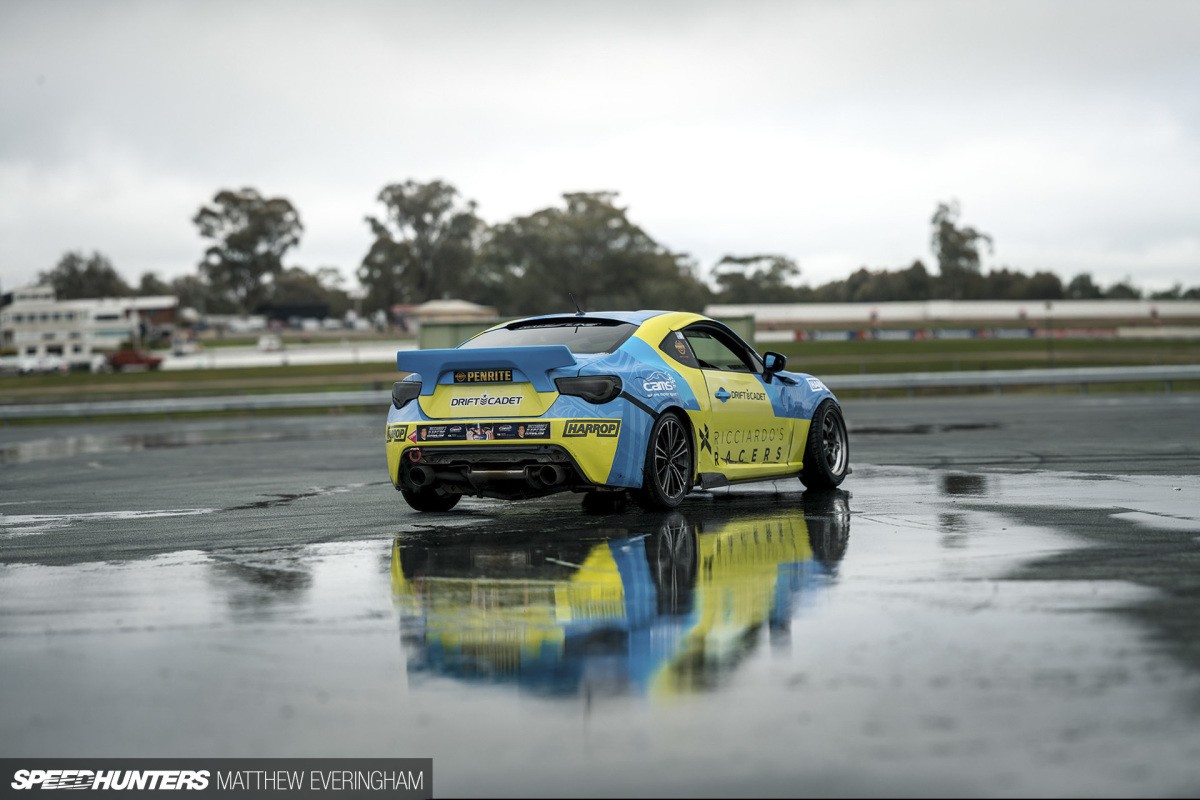


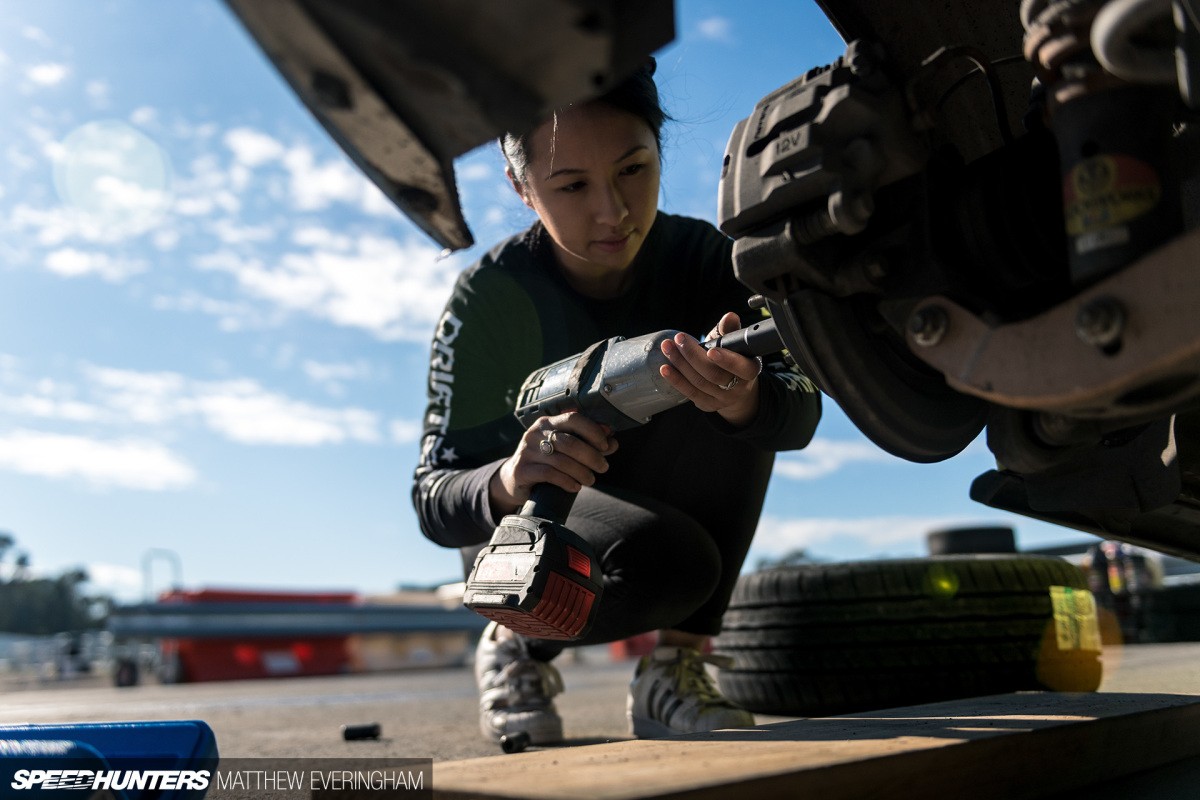




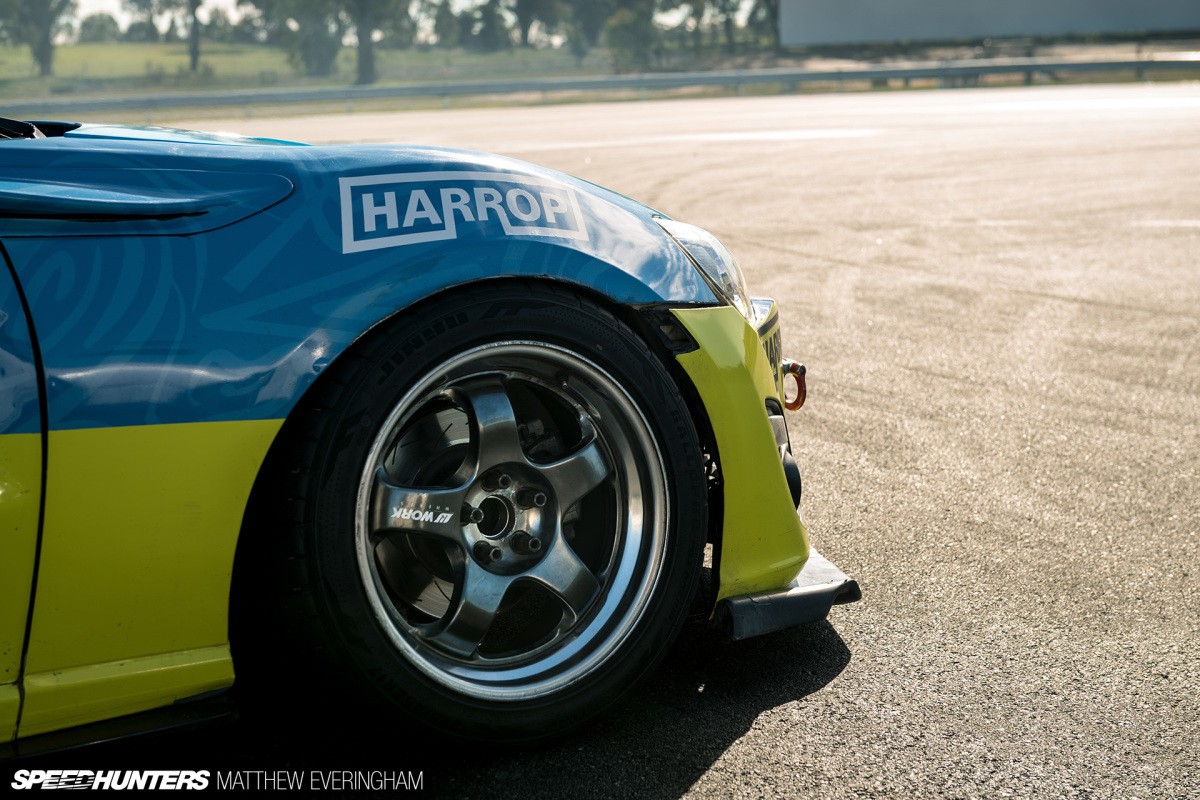









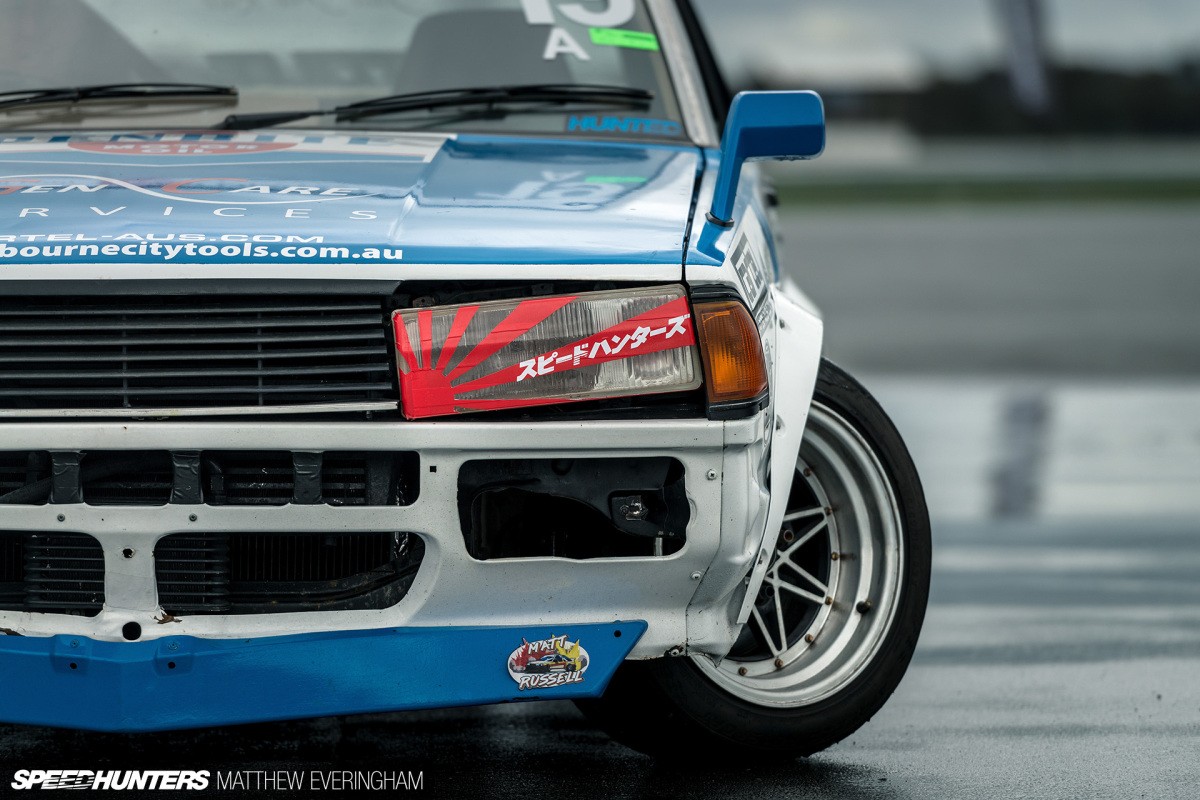


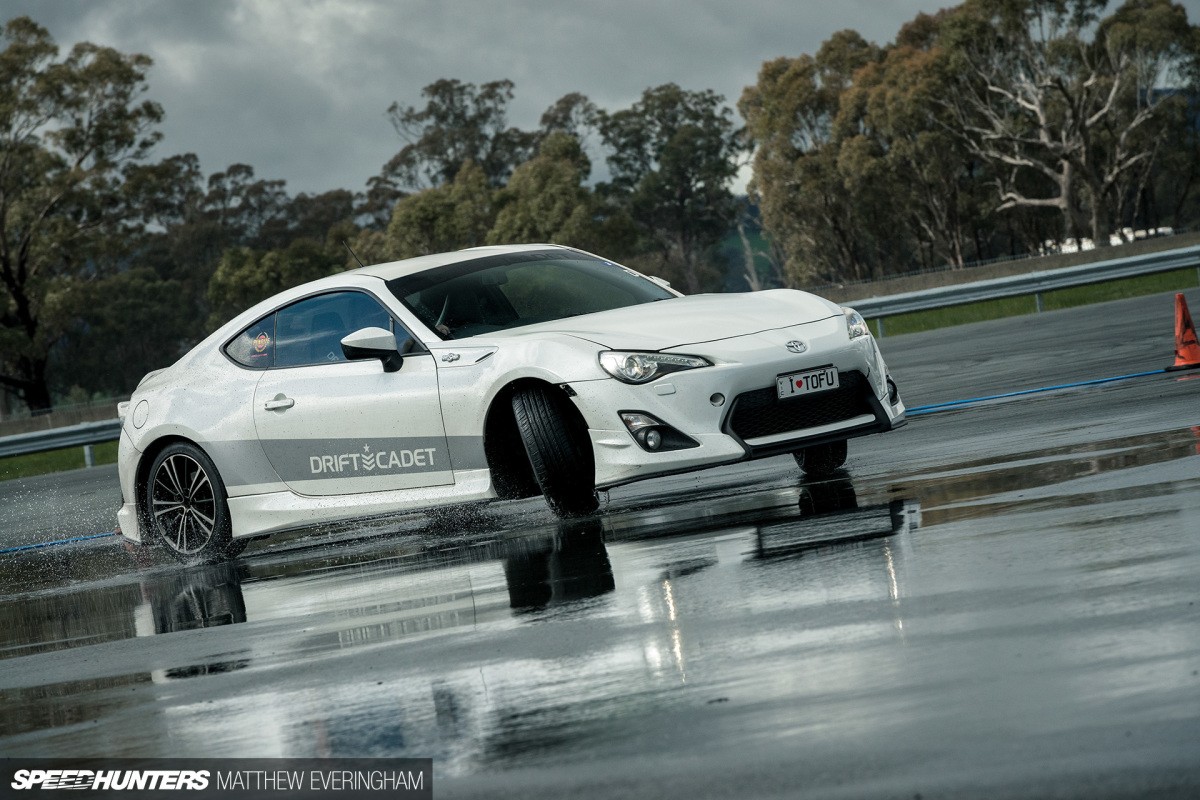
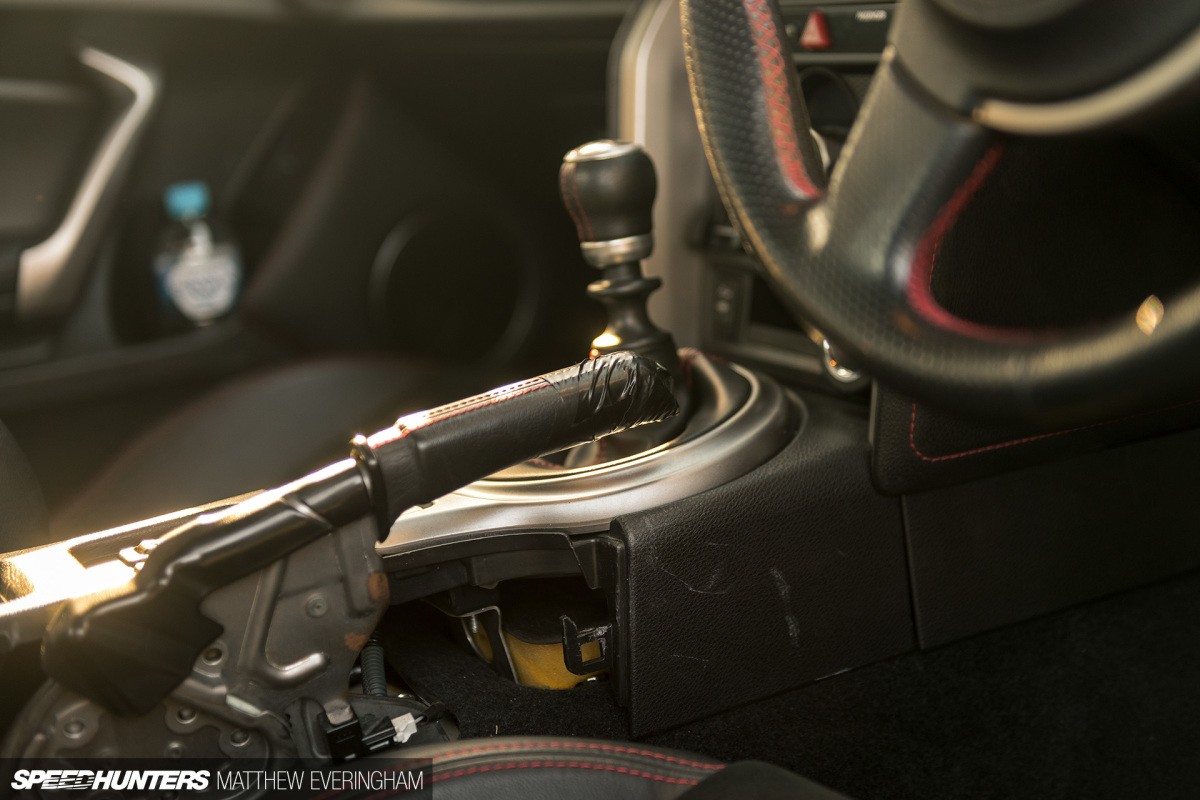







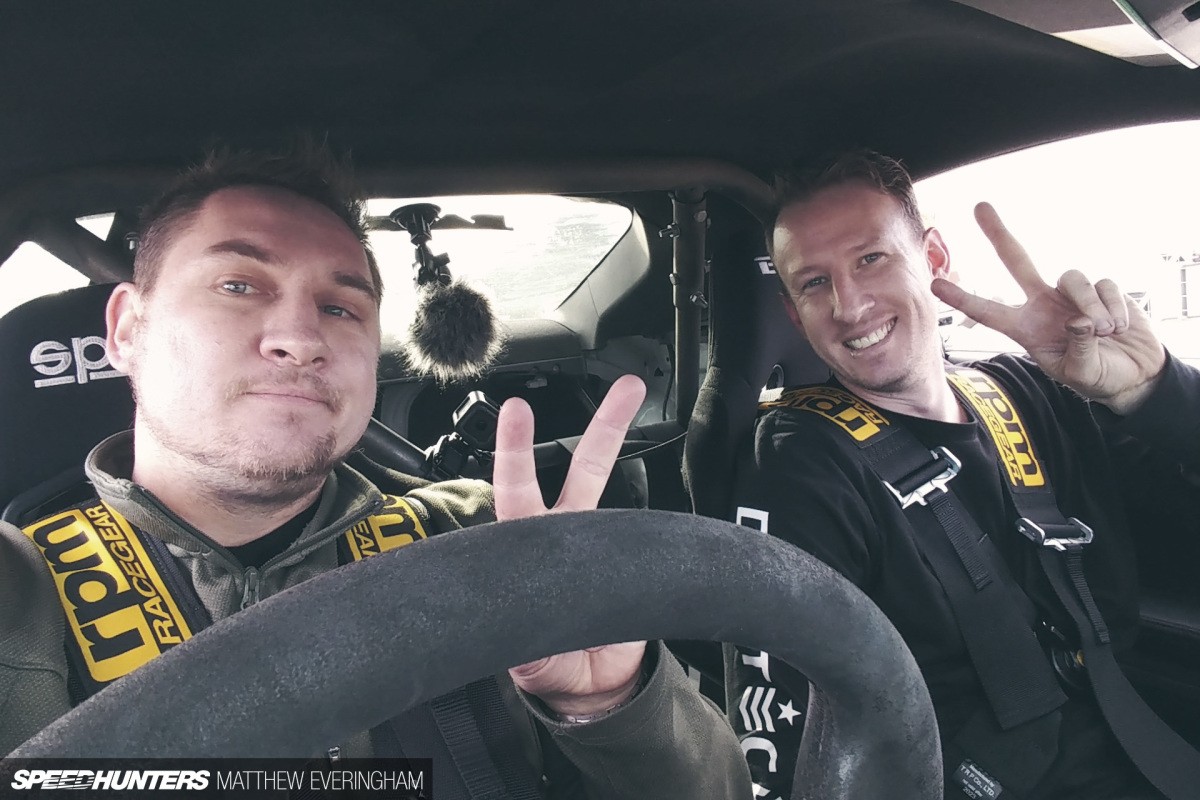
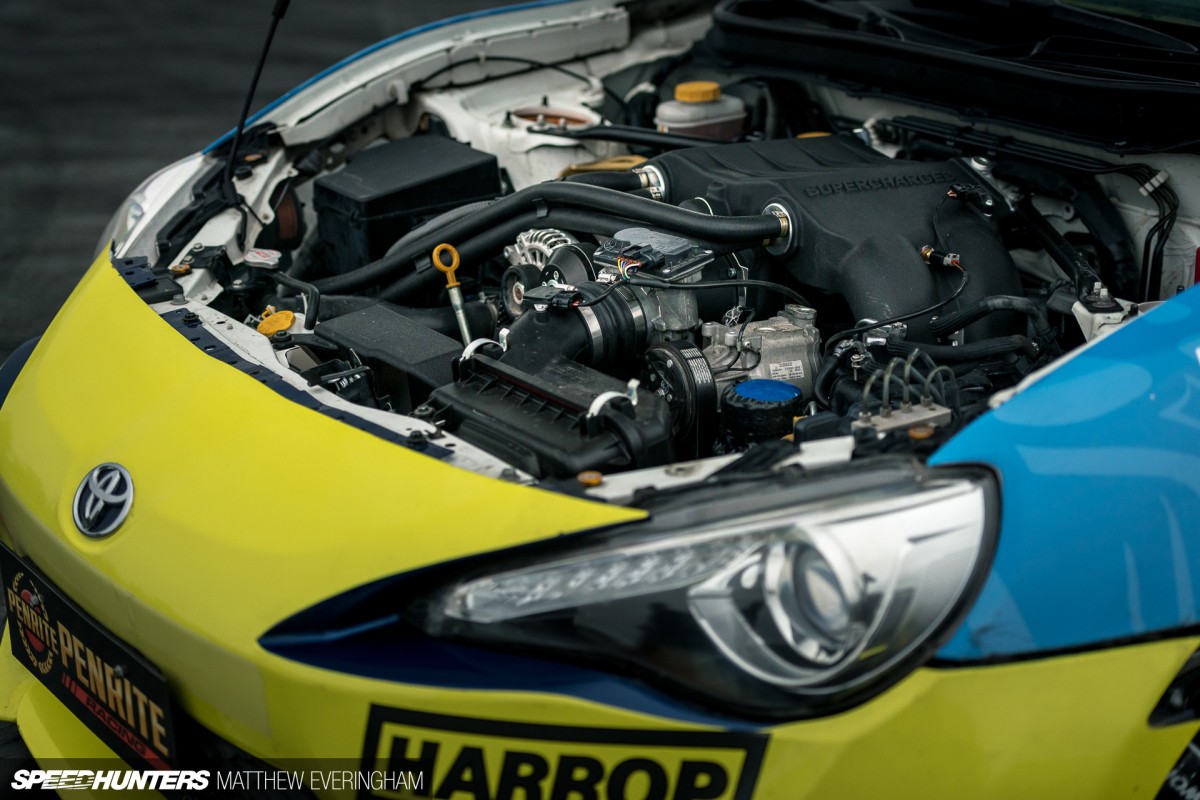
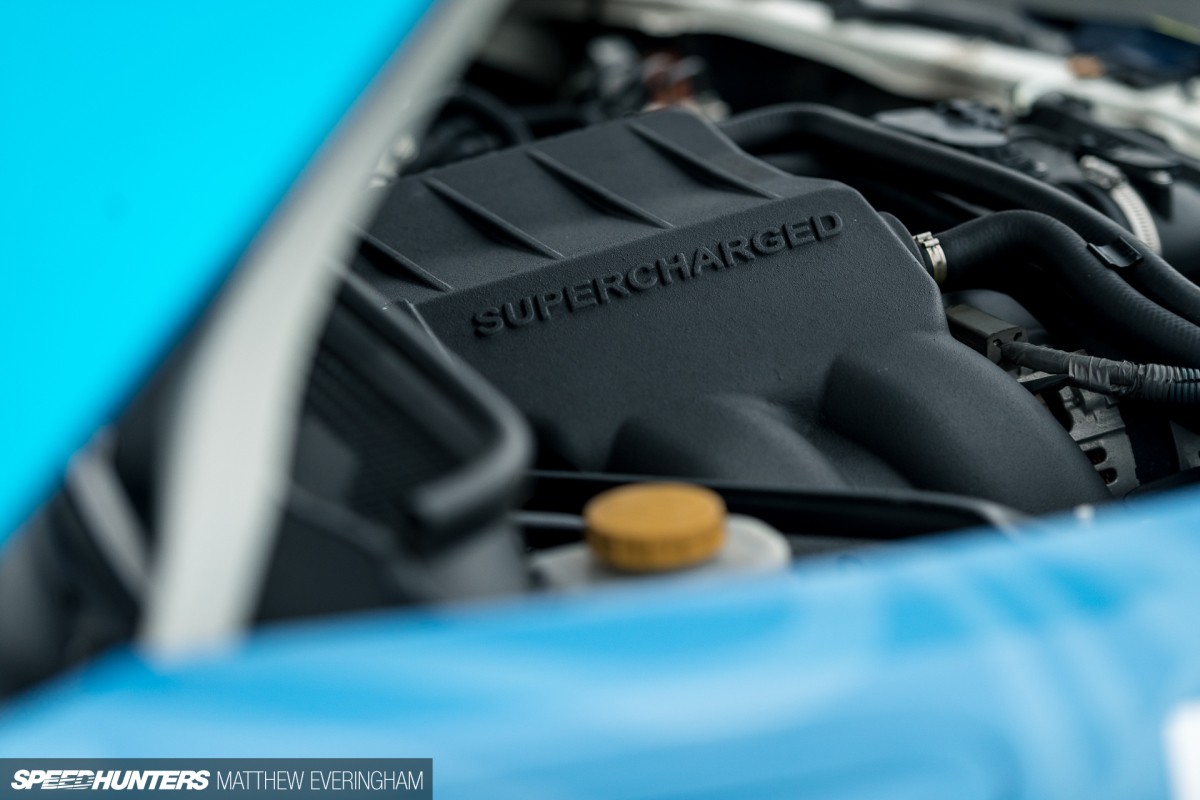

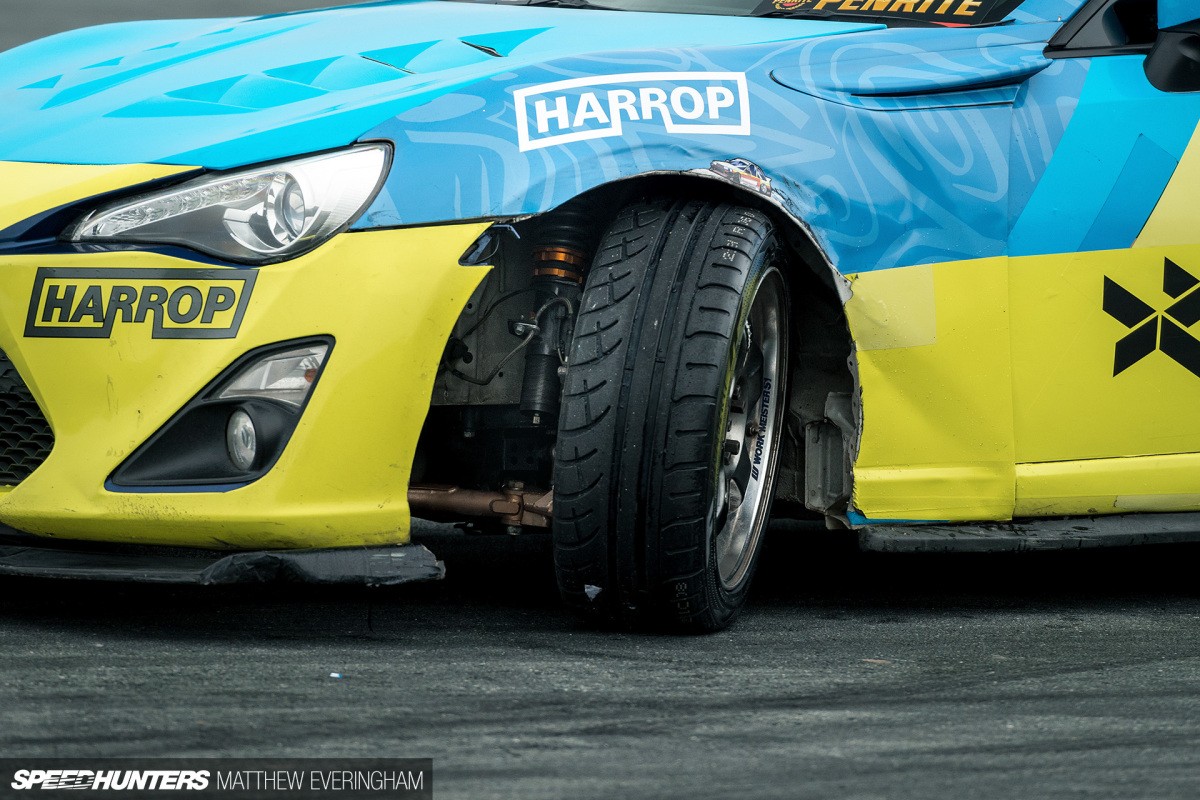

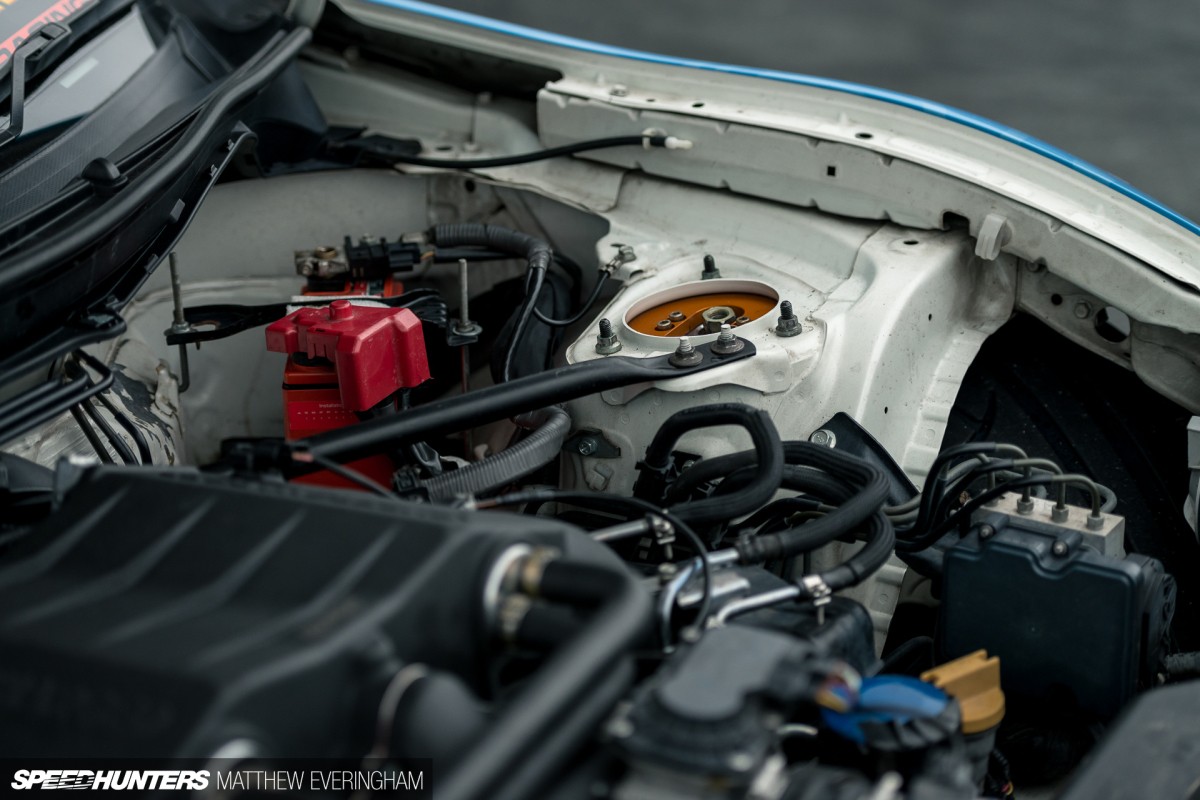
3.2 Essential Modifications
To enhance your car’s drifting capabilities, consider these modifications:
- Limited Slip Differential (LSD): Improves traction and control during drifts.
- Types: Clutch-type, Torsen, and viscous LSDs.
- Benefits: Consistent power delivery to both rear wheels.
- Coilovers: Adjustable suspension that allows you to fine-tune the car’s handling.
- Benefits: Ride height adjustment, damping control.
- Increased Steering Angle: Allows for greater steering lock, making it easier to catch and control drifts.
- Kits: Aftermarket steering angle kits.
- Benefits: More aggressive drift angles.
- Hydraulic Handbrake: Provides more precise and reliable handbrake control.
- Benefits: Easier initiation of drifts.
- Bucket Seats and Harnesses: Keep you securely in place during aggressive maneuvers.
- Safety: Essential for preventing injury.
- Roll Cage: Provides additional safety in the event of a rollover.
- Safety: Crucial for competitive drifting.
- Cooling Upgrades: Upgraded radiator and oil cooler to prevent overheating.
- Reliability: Essential for maintaining engine health.
3.3 Safety Gear
Safety should always be your top priority when drifting. Essential safety gear includes:
- Helmet: Protects your head in the event of a crash.
- Standards: Snell or FIA approved.
- Racing Suit: Fire-resistant suit that protects your body from burns.
- Layers: Single or multi-layer suits.
- Gloves and Shoes: Provide better grip and protection.
- Materials: Fire-resistant materials.
4. Where to Practice Drifting
Practicing in a safe and controlled environment is crucial for learning how to drift.
4.1 Designated Drift Tracks
Drift tracks are specifically designed for drifting and provide a safe environment to practice your skills.
Benefits of Drift Tracks:
- Safe Environment: No oncoming traffic or obstacles.
- Professional Instruction: Experienced instructors can provide guidance.
- Track Layouts: Designed to challenge and improve your drifting skills.
4.2 Skid Pads
Skid pads are large, open areas designed for practicing car control skills.
Benefits of Skid Pads:
- Open Space: Plenty of room to make mistakes without consequences.
- Low Cost: Often more affordable than drift tracks.
- Versatile: Can be used to practice various car control techniques.
4.3 Autocross Events
Autocross events are timed competitions that involve navigating a course marked by cones.
Benefits of Autocross:
- Develop Car Control: Improves your ability to handle a car at its limits.
- Competitive Environment: Opportunity to test your skills against other drivers.
- Affordable: Relatively low cost compared to other forms of motorsport.
4.4 Legal Considerations
It’s crucial to practice drifting in legal and safe environments. Drifting on public roads is illegal and dangerous.
Key Points to Remember:
- Never drift on public roads.
- Always practice in designated areas.
- Follow all track rules and regulations.
5. Advanced Drifting Techniques
Once you’ve mastered the basics, you can move on to more advanced techniques.
5.1 Angle Control
Angle control is the ability to maintain a consistent drift angle throughout a corner.
How to Improve Angle Control:
- Throttle Modulation: Use precise throttle inputs to adjust the drift angle.
- Steering Adjustments: Make small steering adjustments to maintain the desired angle.
- Weight Transfer: Use weight transfer to influence the car’s rotation.
5.2 Linking Corners
Linking corners involves smoothly transitioning from one drift to another, creating a seamless flow through a series of turns.
Tips for Linking Corners:
- Plan Ahead: Anticipate the next corner and plan your entry.
- Smooth Transitions: Use smooth and controlled transitions to maintain momentum.
- Consistent Angle: Maintain a consistent drift angle throughout the transition.
5.3 Tandem Drifting
Tandem drifting involves two or more cars drifting together in close proximity.
Challenges of Tandem Drifting:
- Proximity: Maintaining a safe distance from the lead car.
- Synchronization: Matching the lead car’s speed and angle.
- Communication: Coordinating with the lead driver.
6. Common Mistakes to Avoid When Learning To Drift
Learning to drift involves trial and error, but avoiding common mistakes can accelerate your progress.
6.1 Over-Correcting
Over-correcting is a common mistake that occurs when you steer too aggressively in response to oversteer.
How to Avoid Over-Correcting:
- Smooth Inputs: Use smooth and controlled steering inputs.
- Anticipate: Anticipate the car’s movements and react accordingly.
- Relax: Stay relaxed and avoid panicking.
6.2 Too Much Throttle
Applying too much throttle can cause the car to spin out of control.
How to Avoid Too Much Throttle:
- Gradual Application: Gradually apply throttle and monitor the car’s response.
- Tire Grip: Pay attention to the amount of grip available and adjust accordingly.
- Engine Sound: Listen to the engine and avoid over-revving.
6.3 Not Looking Ahead
Focusing on the immediate area in front of the car can lead to mistakes.
How to Look Ahead:
- Scan the Track: Continuously scan the track and anticipate upcoming turns.
- Visualize the Line: Visualize the ideal line through the corner.
- Plan Your Inputs: Plan your steering and throttle inputs in advance.
6.4 Neglecting Maintenance
Failing to maintain your car can lead to mechanical failures and dangerous situations.
Essential Maintenance Tasks:
- Check Tire Pressure: Regularly check and adjust tire pressure.
- Inspect Brakes: Inspect brake pads and rotors for wear.
- Change Oil: Change oil regularly to maintain engine health.
- Check Fluids: Check and top off all fluids, including coolant, brake fluid, and power steering fluid.
7. Drifting as a Competitive Motorsport
Drifting has evolved into a popular motorsport with organized competitions around the world.
7.1 Key Drifting Competitions
- Formula Drift: North America’s premier drifting series.
- D1 Grand Prix: Japan’s leading drifting series.
- Drift Masters European Championship: Europe’s top drifting series.
7.2 Judging Criteria
Drifting competitions are judged based on several criteria:
- Line: Following the designated line through the course.
- Angle: Maintaining a high drift angle.
- Style: Demonstrating a unique and aggressive driving style.
- Speed: Carrying a high speed through the course.
7.3 Building a Competitive Drift Car
Building a competitive drift car requires significant investment and expertise. Key considerations include:
- Engine Performance: High horsepower and torque.
- Suspension Tuning: Optimized for drifting.
- Chassis Reinforcement: Strengthening the chassis to withstand stress.
- Weight Reduction: Reducing weight to improve handling.
8. Resources for Learning How To Drift
Many resources are available to help you learn how to drift.
8.1 Online Courses and Tutorials
Online courses and tutorials provide structured lessons and expert instruction.
Popular Online Resources:
- YouTube Channels: Channels dedicated to drifting techniques and tutorials.
- Online Forums: Communities where you can ask questions and share experiences.
- Professional Drifting Schools: Offering comprehensive courses and instruction.
8.2 Books and Articles
Books and articles provide in-depth information on drifting techniques and car setup.
Recommended Reading:
- “Drifting: Sideways Action, Style, and Mayhem” by Grant Yokum
- “High Performance Driving: Skills & Techniques for Mastering the Art” by Ross Bentley
8.3 Drifting Communities and Clubs
Joining a drifting community or club provides opportunities to learn from experienced drifters and participate in events.
Benefits of Joining a Club:
- Networking: Connect with other drifters.
- Events: Participate in organized drift events.
- Knowledge Sharing: Learn from experienced members.
9. Staying Safe While Drifting
Safety should always be your top priority when drifting.
9.1 Pre-Drift Checklist
- Vehicle Inspection: Check tires, brakes, fluids, and suspension.
- Safety Gear: Wear a helmet, racing suit, gloves, and shoes.
- Track Conditions: Assess the track conditions and adjust your driving accordingly.
9.2 Emergency Procedures
- Knowing how to handle common emergencies: spin-outs, mechanical failures, and collisions.
- First Aid: Basic first aid knowledge can be crucial in case of injury.
- Communication: Knowing how to communicate with track officials and other drivers.
9.3 Respecting the Limits
- Knowing your limits: recognizing when you’re pushing too hard.
- Progressive Learning: gradually increasing difficulty as you improve.
- Avoiding Overconfidence: staying humble and recognizing that drifting is a continuous learning process.
10. The Future of Drifting
Drifting continues to evolve as a motorsport and a driving technique.
10.1 Technological Advancements
- Electronic Aids: Traction control and stability control systems.
- Data Logging: Analyzing performance data to improve driving.
- Simulation: Using simulators to practice and refine skills.
10.2 Growing Popularity
- Increased Media Coverage: More drifting events are being televised and streamed online.
- Growing Fan Base: Drifting is attracting a larger and more diverse fan base.
- Global Expansion: Drifting is becoming more popular in countries around the world.
10.3 Sustainable Drifting Practices
- Electric Drift Cars: Exploring electric vehicles for drifting.
- Eco-Friendly Tires: Developing tires that are more environmentally friendly.
- Reduced Emissions: Reducing emissions through improved engine technology.
FAQ: Frequently Asked Questions About How To Learn How To Drift
1. Is drifting illegal?
Drifting is illegal on public roads but is permitted in designated drift tracks and skid pads.
2. What is the best car for learning to drift?
Cars like the Toyota AE86, Nissan 240SX, and Mazda MX-5 Miata are popular choices due to their rear-wheel-drive layout and balanced handling.
3. How long does it take to learn how to drift?
It depends on individual skill and practice, but most beginners can start performing basic drifts within a few months of consistent practice.
4. What safety gear do I need for drifting?
Essential safety gear includes a helmet, racing suit, gloves, and shoes. A roll cage and harnesses are recommended for more advanced drifting.
5. Can I learn to drift in an automatic car?
It is more challenging to drift in an automatic car, but some newer automatic transmissions with manual shift modes can be used.
6. What is a limited-slip differential (LSD) and why is it important for drifting?
An LSD distributes power evenly to the rear wheels, improving traction and control during drifts.
7. What is counter-steering?
Counter-steering is the technique of steering in the opposite direction of the turn to correct oversteer and maintain control.
8. How do I initiate a drift?
Common initiation techniques include the clutch kick, handbrake, power over, and feint (Scandinavian flick).
9. What are some common mistakes to avoid when learning to drift?
Common mistakes include over-correcting, applying too much throttle, not looking ahead, and neglecting maintenance.
10. Where can I practice drifting safely and legally?
Designated drift tracks, skid pads, and autocross events are safe and legal places to practice drifting.
Conclusion
Learning how to drift is an exciting journey that requires dedication, practice, and the right guidance. By mastering the fundamental skills, preparing your car, and practicing in safe environments, you can unlock the thrill of controlled sliding. Remember to prioritize safety and continuously seek improvement.
Ready to take your driving skills to the next level? Visit LEARNS.EDU.VN for more in-depth articles, tutorials, and courses on drifting and advanced car control techniques. Explore our resources and join a community of passionate drivers. Contact us at 123 Education Way, Learnville, CA 90210, United States, or Whatsapp: +1 555-555-1212. Start your drifting adventure today with learns.edu.vn.
Alt: Mastering car drift control with calculated precision on the track.
Alt: Perfecting the drift technique to slide with elegance and accuracy.
Alt: Demonstrating advanced drifting skills at a motorsports event.
Alt: Dynamic car control during high-speed drifting maneuvers.
Alt: Mastering smooth transitions and angle control while drifting.
Alt: Close-up of a car drifting showing tire smoke and motion blur.
Alt: Maintaining perfect control during a drift demonstration.
Alt: A driver in full gear showing determination before a drifting session.
Alt: Car perfectly balanced mid-drift on the race track.
Alt: Precision steering and control during car drifting exercises.
Alt: Executing tight, controlled drifts around cones for skill development.
Alt: Practicing car spinning techniques with expert guidance.
Alt: Demonstrating car modifications for optimal drifting performance.
Alt: Mastering control with a modified car during drifting lessons.
Alt: Close up of tire marks after professional drifting.
Alt: An instructor giving drifting guidance for better car control.
Alt: Learning expert insights into drifting strategies on the track.
Alt: Understanding how to correct drifting mistakes with expert instruction.
Alt: Expert drifting coach in the passenger seat providing key insights.
Alt: Applying expert drifting tips to maintain car balance.
Alt: Demonstrating controlled drifting around tight corners.
Alt: Mastering the art of controlled donuts in a drifting session.
Alt: Learning the nuances of car-talk for better drifting.
Alt: Smooth car input leading to successful drifting loops.
Alt: Balancing a car through pirouettes with quick steering and power.
Alt: Learning smooth transitions is important in drifting.
Alt: Drifting requires a coffee break to refresh your mind.
Alt: Drifting students on a break reflecting what they’ve learned.
Alt: Linking half a dozen eights together with ease.
Alt: There are modified cars built for drifting that helps with the art.
Alt: The focus and determination one should have when learning to drift.
Alt: Toyota 86 that is supercharged and built for the drifting track.
Alt: Modified suspension to handle the rigors that come with drifting.
Alt: Modifications that help with the driving experience.
Alt: Upgrades to the exhaust that increase power.
Alt: The coupe feels like the ideal power range for the sporty coupe.
Alt: Upgraded suspension systems make the ride better for drifting.
